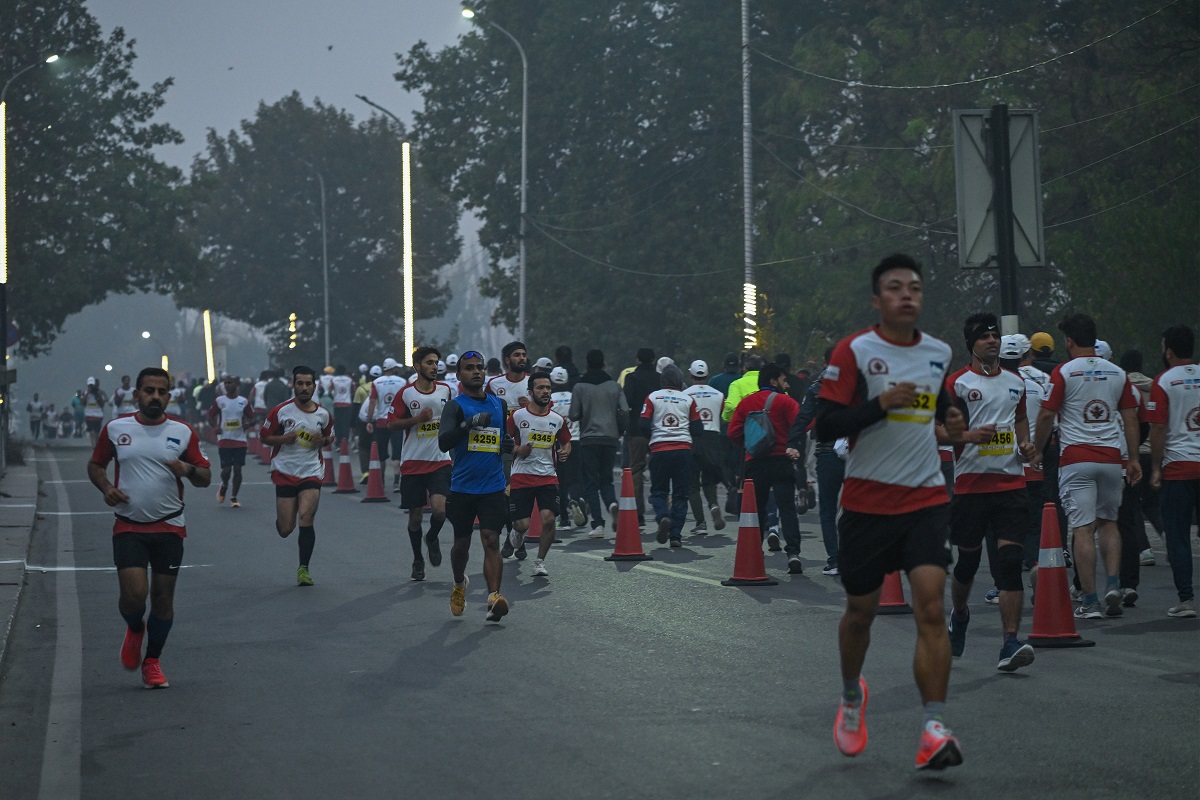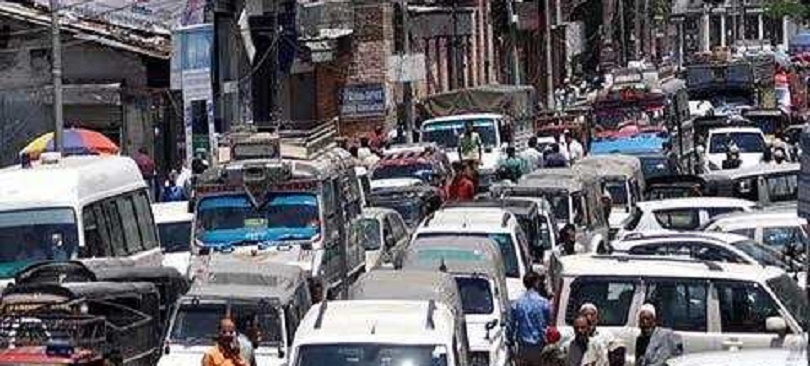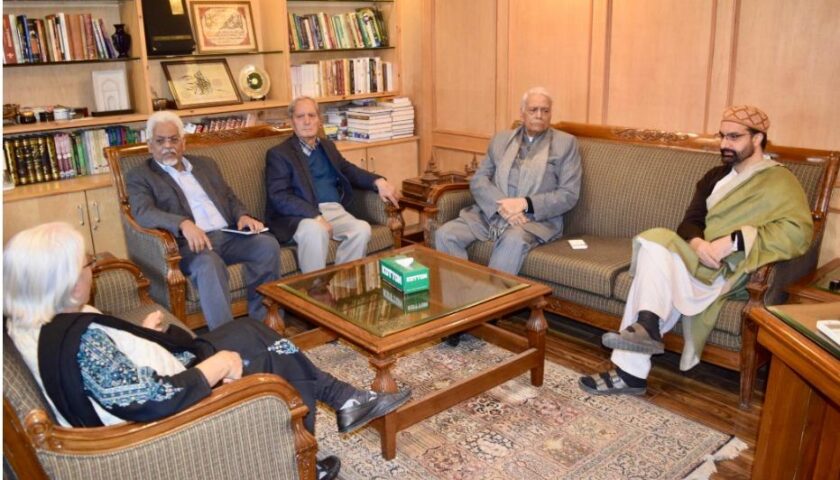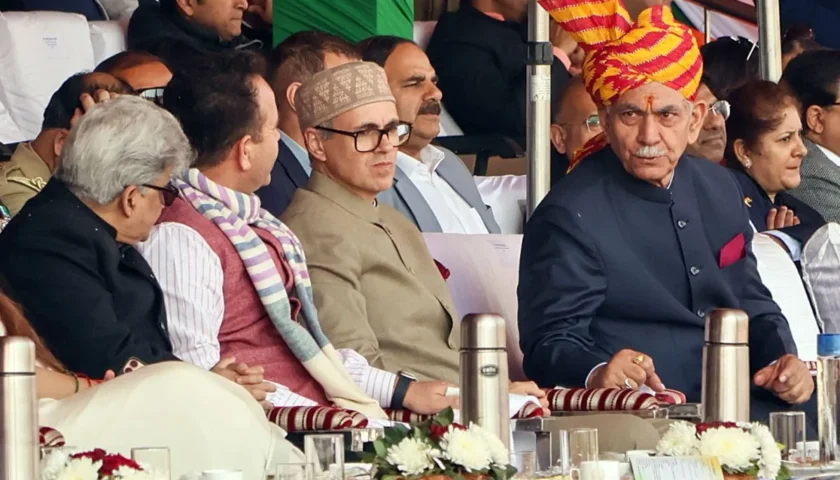Kashmir Marathon 2.0: “We Are Back in a Big Way,” Says Suniel Shetty
By: Javid Amin | 02 November 2025
The early morning mist hovered over the hills of Srinagar as the warning horn sounded, the runners took off—and with them came a strong message: the valley is open, vibrant and ready. The recent edition of the Kashmir Marathon 2.0 emerged not just as a sporting event, but as a canvas where fitness, tourism revival and social harmony met in the heart of the Valley.
Flag off by Bollywood star Suniel Shetty and Chief Minister Omar Abdullah, this edition welcomed over 1,500 participants from across India and beyond. According to multiple reports the race route wound from Polo View through the Boulevard Road skirting Dal Lake, showcasing Kashmir’s unmatched scenic beauty while celebrating resilience and hope.
In this expansive article, we dive deep into the many layers of the event—its organisation, the ground realities, the human stories, the wider implications for sport and tourism in Jammu & Kashmir, and why this marathon marks more than just miles covered.
Setting the Stage: Why the Marathon Matters
01. A Sporting Event with Layers of Meaning
While marathons are inherently about endurance and personal triumph, the Kashmir Marathon 2.0 was layered with added significance. It symbolized a revival of public life and sporting culture in a region that, in recent years, has grappled with visible challenges. By combining the competitive elements of a full marathon (42 km) and half-marathon (21 km) with the backdrop of Srinagar’s scenic vistas, the event married athleticism with place-branding.
02. Tourism, Fitness and Peace in One Package
Organisers—including the Jammu & Kashmir Sports Council and the Jammu & Kashmir Tourism Department—positioned the marathon as a tool for boosting tourism, promoting fitness among youth, and reinforcing a message of peace and unity. According to one report, “through this marathon, we are sending out a message of peace, love, prosperity and brotherhood.”
03. The Route: Beauty Meets Challenge
At 6 a.m. on the dot, runners set off from Polo View in Srinagar, a vantage point that opens into the Boulevard Road beside Dal Lake. The route traversed through shimmering surfaces, the waves of the lake, and rose toward the Zabarwan range—offering not only a physical test but also a visual feast. Reports say the route is among “the most beautiful tracks in the country”.
The Flagoff, The Star Power & What It Signifies
01. Suniel Shetty’s Statement: “We are back in a big way.”
Bollywood actor Suniel Shetty, speaking to reporters in Srinagar, captured the spirit of the event:
“What a beautiful morning this is… just look at the spirit of people running for Kashmir, for India. It’s truly wonderful.”
He noted the age-diverse participation, spoke of his hope that tourism and film shoots in Kashmir will surge, and emphasised the valley’s beauty returning. In his own words, “I saw … full of energy. It is incredible to witness such enthusiasm.”
02. Omar Abdullah: Leadership on the Track
Chief Minister Omar Abdullah didn’t merely attend the flag-off—he participated in the half-marathon, completing it successfully. This kind of political participation sends a strong symbolic message. The New Indian Express reported: “CM Omar Abdullah also took part in the Half Marathon and completed it successfully.”
It signals that the government is willing to lead from the front.
03. What the Presence of Stars and Leaders Adds
Celebrity involvement and political backing serve multiple roles. They heighten media attention, reinforce the legitimacy of the event, and help draw participants and sponsors. In this case, Shetty’s presence validated the marathon as more than just a local run—it was a national (and international) moment for Kashmir. Meanwhile Abdullah’s involvement reinforced governmental support, reducing perceptions that the event was a peripheral or low-priority affair.
Participation and Scale: Numbers That Speak
01. Who Showed Up? A Global Field.
Reliable sources state that more than 1,500 runners participated in the event. The New Indian Express summary mentions “about 1,500 runners, including some foreigners … from 27 states and 11 countries such as Germany, Denmark, USA, Ethiopia, Kenya, Japan, and Sri Lanka.”
Another outlet reported “77 international athletes from 11 countries” alongside Indian participants.
02. Representation, Diversity and Demographics
The mix included first-time amateur runners, seasoned athletes, local youth, seniors above age 60, and international participants—a demographic mix that reinforces the inclusive nature of the event. Suniel Shetty noted his surprise and delight at seeing runners of every age group.
Such diversity indicates the event’s reach beyond elite sport, resonating with fitness, tourism, and social participation.
03. Race Categories & Prize Structure
The marathon comprised at least two major distances: a full marathon of 42 km and a half marathon of 21 km. According to Greater Kashmir, prize money for winners was a total pool of Rs 25 lakh.
This level of prize money is significant—it signals that the organisers aimed to attract serious runners and give the event competitive gravitas.
04. The Geography of Participation
With representation from 27 Indian states and 11 countries, the event is shaping up as an international destination race. Runners from Kenya and Ethiopia (nations famous for distance running) give the race a competitive edge; participants from Germany, Denmark, Japan, USA reflect its outreach.
This geographical diversity supports the narrative that Kashmir is re-emerging on the global sports tourism map.
On the Ground in Srinagar: Atmosphere, Challenges & Highlights
01. Dawn in the Valley: Setting the Tone
The runners gathered in the cool November morning at Polo View. The sun cast soft light over Dal Lake, and the Boulevard Road—traditionally a tourist promenade—became a race corridor. The lake’s vapour, the chirping birds, the mountainous horizon: all merged into a setting few marathons can boast.
As one runner exclaimed: “We ran through heaven.”
02. Logistics and Event Management
Managing 1,500 + runners, many of them from outside the region, is no small feat. The coordination between accommodation, transport, hydration stations, medical backup, route security and communications is intensive—particularly in a region like Kashmir with unique terrain and weather considerations. The fact that the event proceeded smoothly speaks to logistical diligence by the organisers.
03. Weather, Terrain and Runner Feedback
November in Srinagar is chilly, especially at dawn, so runners needed cold-weather readiness. The terrain from Boulevard Road up toward the Zabarwan Range adds incline challenges—far from flat city marathons.
Several runners noted that the scenic beauty served as a psychological boost—gliding past Dal Lake and skirting forested hills made for not just a run, but an experience.
04. Emotions, Symbolism and Local Pride
Local spectators cheered, vendors sold refreshments, and tourist flows got a boost. For residents of Srinagar, the marathon was not simply a race—it became a celebration. The early morning gatherings, the community spirit, the sense of unity across locals and visitors created palpable energy.
One vendor observed: “Things were low-key here after the Pahalgam incident, but now normal activities are coming back to life.”
That statement hints at deeper social and tourism-related currents.
05. Challenges Faced
No event of this magnitude can be perfect—but key to success is how issues are managed. In Kashmir’s context, potential challenges include weather unpredictability, security considerations, and ensuring accessibility for all participants. While most reports emphasise successes, organisers must absorb lessons on transport bottlenecks, runner orientation in unfamiliar terrain, and maybe more linear pace groupings for future editions.
Tourism & Social Impact: More Than Just the Run
01. Tourism Revival in the Valley
Kashmir’s tourism sector has faced turbulence, including the grievous April 22 Pahalgam terror attack which hit visitor confidence. The marathon thus arrives at a critical juncture: it offers a tangible demonstration that the region is safe for visitors, capable of hosting large-scale events, and delivering wholesome experiences.
Suniel Shetty’s remarks emphasised this: “I am sure that the winter season will have a good inflow of tourists and athletes in Kashmir.”
02. Youth Empowerment, Fitness and Civic Pride
When youth, amateurs, seniors—even international runners—take to the course, it brings home the transformative potential of sport. For local Kashmiri youth, lining up alongside runners from Kenya, Denmark or Japan provides inspiration, exposure and open doors. The event underscores not just competition, but community wellness and fitness culture.
03. Peace Through Sport & Symbolic Messaging
The marathon served as a symbolic step: bridging locals and visitors, sport and tourism, dawn and mountain vistas. In a region accustomed to tension and headlines of conflict, an event like this underscores “togetherness.” The quotes from officials emphasising “peace, love, prosperity and brotherhood” are not mere slogans but integral to the public narrative.
04. Local Economy and Service Sector Boost
Large-scale events create ripple effects: hoteliers, transport providers, local vendors, guides, food stalls, souvenir sellers—all benefit. The marathon thus generates localized economic stimulus. Moreover, it helps raise regional awareness, potentially encouraging repeat visits for trekking, cultural tours, adventure travel.
The Future Road: What This Event Implies for 2026 and Beyond
01. Institutionalising the Marathon
For the Kashmir Marathon 2.0 to move beyond a one-off spectacle into a sustained institution, organisers must focus on consistency, improved infrastructure, runner amenities and global outreach. The presence of a large prize pool, varied distance categories and international participation are strong foundations.
02. Growing the Brand & Global Profile
Setting up a dedicated website, timing and results system, certification (IAAF/AIMS), inviting elite runners, establishing tourism-packages around the event—all can raise the Marathon’s profile. With more than 1,500 participants this time, the potential for 2,500 + and stronger global representation in future exists.
03. Leveraging Media & Storytelling
For a region like Kashmir, the narrative is crucial. Media coverage of athleticism, tourism revival and cultural renewal helps shift perceptions. Events like this can become part of visitor stories, film shoots, adventure packages. As one outlet noted, “we ran through heaven.”
04. Integrating Local Communities & Sustainable Practices
Ensuring local community involvement, sustainable environmental practices (in a fragile valley ecosystem), and inclusive participation (women, persons with disabilities) will add depth and authenticity. The route already offers natural beauty—leveraging that with environment-friendly practices enhances the long-term viability.
05. Challenges to Anticipate
Continuing growth is not automatic: organisers must guard against logistical failures, transport issues, weather complications, security costs and funding models that rely too heavily on one-time sponsors. Maintaining quality, runner experience and return visits will matter.
Voices from the Marathon: Personal Stories & Highlights
01. Runners’ Reflections
From the Kashmir Observer:
“We ran through heaven,” said runners after the experience.
Such comments reveal that for many participants, the marathon was as much about place and experience as it was about time or competition.
Another runner from abroad noted being “mesmerised by the Valley’s natural beauty” and the “warm welcome” of locals—comments that highlight tourism cross-over elements.
02. Celebrities, Officials and Their Remarks
Suniel Shetty, as reported:
“People are running for Kashmir and for India… I am amazed to see enthusiasm of people of all ages who were running in this event.”
Chief Minister Omar Abdullah:
“Completed the Kashmir Half Marathon. I didn’t set a personal best but I did improve on my effort last year.” (via social media)
These remarks illustrate participation beyond mere symbolism—they make the event relatable, human and dynamic.
03. Local Respondents
Local vendors and service providers indicated optimism:
“Things were low-key here post Pahalgam attack but normal activities are coming back to life.”
This sort of on-the-ground feedback adds weight to the idea that the marathon is affecting lives beyond the finish line.
Why This One Run Matters More Than Many
The Kashmir Marathon 2.0 may look like just another race on the global marathon calendar—but in the context of its place and moment, it carries deeper resonance.
-
Symbol of Peace & Revival: In a region that has seen conflict, disruptions and tourism setbacks, an early-morning marathon becomes a public testament to normalcy, hope and resilience.
-
Tourism-Sport Convergence: Rather than just hosting visitors, Kashmir used the event to blend sport with tourism: scenic route, global participants, youth representation.
-
Local–Global Bridge: With runners from beyond India’s borders, the event connects Kashmir to the global running community—raising potential for future destination events.
-
Fitness & Social Engagement: Beyond elite athletes, the marathon’s inclusion of amateurs, seniors and locals indicates a trend toward broader fitness culture in the region.
-
Media & Perception Shift: Coverage emphasising unity, beauty and sport (rather than conflict) helps transform narratives and encourages future events, film shoots and holiday visitors.
Practical Takeaways for Runners & Planners
01. For Runners Considering Kashmir
-
Prepare for early mornings and cold conditions; November dawns at 6 a.m. in Srinagar can be chilly.
-
Choose the full (42 km) or half (21 km) wisely—terrain is scenic but has inclines toward the Zabarwan Range.
-
Check travel and stay arrangements early—Srinagar offers unique hospitality, but logistics in a remote terrain can vary.
-
Embrace the experience: The view, the community, the cultural context matter as much as the time on the clock.
02. For Event Planners & Tourism Bodies
-
Use scenic routes as part of the branding; natural beauty is a strength in Kashmir’s case.
-
Ensure strong logistics: accommodation, transport, medical services, volunteer networks—all must adapt to terrain and season.
-
Engage local communities—vendors, guides, youth ambassadors—to deepen impact.
-
Promote international participation early—highlighting unique destination aspects, hospitality, culture.
-
Link the event to broader tourism calendars (winter, adventure, nature) to maximise visitor stays.
Bottom-Line: Running Into the Future
The second edition of the Kashmir Marathon 2.0 was far more than 1,500 runners traversing scenic paths—it was a statement of place, of ambition, of recovery and renewal. The blend of sport, nature, tourism and unity made this event a landmark.
For Kashmir, each step, each cheer, each finish line is proof that the valley can embrace the world—while the world embraces the valley. The dawn run along Dal Lake’s shores, the photo-worthy skies over the Zabarwan range, the mix of local and foreign runners—all weave together into a narrative of hope.
As Suniel Shetty said, “We are back in a big way.” And perhaps, this run is just the beginning of something much heavier than distance—something about confidence, connection and community.
For runners, visitors, planners and locals alike, the message rings clear: lace up, look around, and be part of Kashmir’s new stride.




